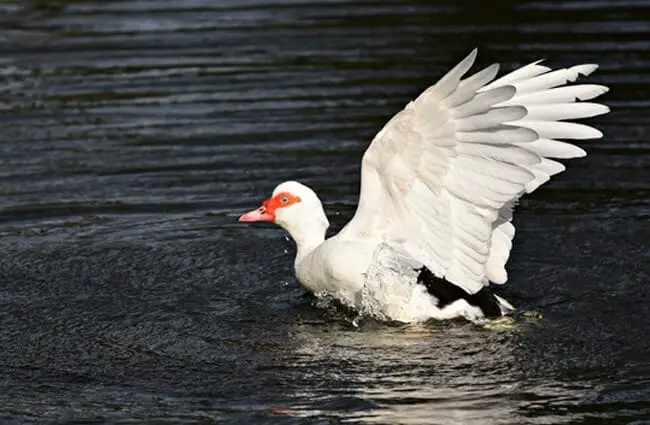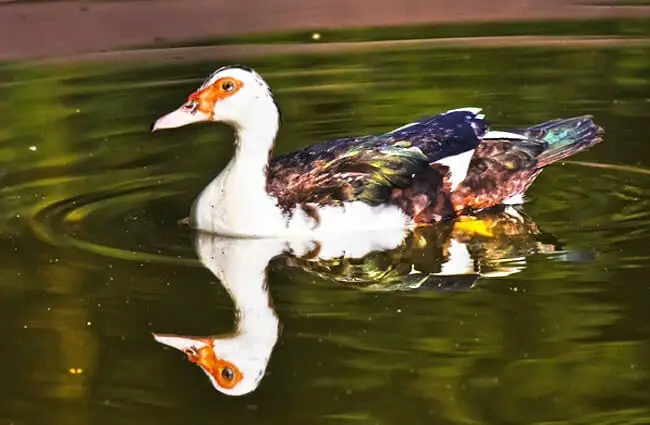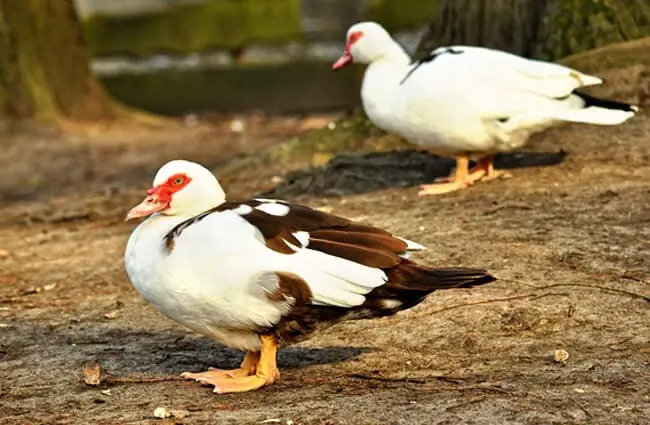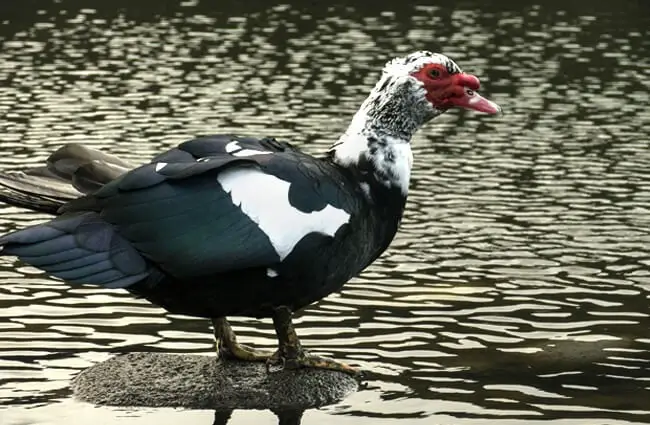The avian world boasts a remarkable diversity, and among its most intriguing members is the Muscovy Duck. Often recognized by the distinctive fleshy caruncles around its face, this waterfowl presents a fascinating subject for both casual observers and dedicated researchers. This guide delves into the comprehensive world of the Muscovy Duck, exploring its natural history, behavior, ecological role, and interactions with humans.

Origins and Evolutionary History
The Muscovy Duck, scientifically known as Cairina moschata, is not a typical duck. It is a member of the Anatidae family, which includes ducks, geese, and swans, but it stands out due to its unique lineage. Unlike many other duck species, the Muscovy Duck’s evolutionary path diverged earlier from the main duck group. Fossil evidence indicates that its ancestors originated in Central and South America. Over time, the species spread northward, reaching North America, and was later introduced to Europe and other parts of the world. The name “Muscovy” comes from the Muscovy region in Russia, where the duck was introduced in the 16th century and became prized for its meat. Genetic studies reveal a closer relationship to geese and swans than to many other duck species, providing valuable insights into avian evolution.
Habitat and Distribution
Muscovy Ducks prefer wetlands. They thrive in shallow marshes, swamps, ponds, and slow‑moving rivers. Their native range covers Central and South America, from the southern United States down to Argentina and Brazil. In addition, introduced populations exist in the United States, particularly in the southeast. Within their range, they favor areas with dense vegetation that offers cover from predators and abundant foraging opportunities. Their adaptability allows them to colonize a variety of aquatic habitats, but they are most common in areas with a mix of open water and forested edges. Observing their habitat preferences is crucial for conservation efforts, especially given the increasing threats to wetland ecosystems.

Diet and Foraging Behavior
Muscovy Ducks are opportunistic omnivores. Their diet is remarkably varied, encompassing a wide range of aquatic plants, seeds, grains, insects, crustaceans, and small fish. They forage by dabbling—tipping forward in the water to reach submerged vegetation—or by diving to locate food on the bottom. Their strong bills are well adapted for digging up roots and tubers, while their rough tongues help them grasp and manipulate food items. During the breeding season, their diet shifts toward protein‑rich foods such as insects and crustaceans to support egg production and chick development. Their foraging behavior plays an important role in nutrient cycling within wetland ecosystems.
Behavior and Social Structure
Muscovy Ducks exhibit a fascinating range of behaviors. While often seen in small groups, they are not as gregarious as many other duck species. They are known for their distinctive hissing sound, used as a warning signal or during territorial disputes. Males, typically larger than females, are fiercely protective of their territories during the breeding season. They are also capable fliers, capable of reaching considerable heights and covering long distances. Interestingly, they sometimes perch in trees—a behavior uncommon among ducks. Understanding their social dynamics and communication signals is essential for effective observation and conservation.

Mating and Reproduction
Muscovy Ducks have a unique mating system. They typically form monogamous pairs, which may last for several years. The breeding season usually occurs in the spring and early summer. The female constructs a nest on the ground, often concealed within dense vegetation. She lays a clutch of six to fifteen eggs, which she incubates for about thirty‑five to thirty‑eight days. The chicks are precocial, meaning they are relatively independent at birth and can follow their mother shortly after hatching. They are capable of foraging for themselves within a few days, but remain under the protection of their mother for several weeks. Parental care is crucial for chick survival, and the loss of nesting habitat poses a significant threat to their reproductive success.
Ecological Role and Interactions
Muscovy Ducks play an important role in wetland ecosystems. As herbivores, they help control the growth of aquatic plants, preventing overgrowth and maintaining water quality. As predators of insects and crustaceans, they contribute to the regulation of invertebrate populations. They also serve as a food source for larger predators, such as foxes, raccoons, and birds of prey. Their foraging activities can enhance nutrient cycling and promote biodiversity within wetlands. Interactions with other waterfowl species can be complex, ranging from competition for resources to cooperative foraging. Understanding these ecological relationships is crucial for effective wetland management and conservation.

Human Interactions and Cultural Significance
Throughout history, Muscovy Ducks have had a close relationship with humans. They were domesticated in South America centuries ago and have since been raised for meat, eggs, and feathers. Their meat is considered a delicacy in some cultures, and their down feathers are highly valued for their warmth and insulation. Muscovy Ducks have also been kept as ornamental birds in parks and gardens. In some indigenous cultures, they hold symbolic or spiritual significance. However, feral populations of Muscovy Ducks can sometimes cause conflicts with humans, especially in urban areas. Managing these conflicts requires a balanced approach that considers both human interests and the welfare of the birds.
Identification and Observation Tips
Identifying a Muscovy Duck is relatively straightforward. Look for a large, dark-colored duck with a distinctive red fleshy caruncle around its face. Males are typically larger than females and have a more pronounced caruncle. They often perch in trees, a behavior uncommon among other duck species. Their flight is powerful and direct. When observing Muscovy Ducks in the wild, maintain a respectful distance and avoid disturbing their habitat. Use binoculars or a spotting scope to get a closer look without causing stress to the birds. Note their behavior, foraging habits, and interactions with other wildlife. Reporting your observations to local bird monitoring programs can contribute to our understanding of their distribution and population trends.

Muscovy Ducks in Captivity
Caring for Muscovy Ducks in captivity requires attention to their specific needs. They need spacious enclosures with access to both land and water. The water should be clean and regularly refreshed. Provide a varied diet that includes aquatic plants, seeds, grains, and protein-rich foods. Provide enrichment items, such as logs, branches, and floating vegetation, to stimulate their natural behaviors. Regular veterinary checkups are essential to monitor their health and prevent diseases. Avoid overcrowding and ensure adequate ventilation to prevent the spread of infections. Muscovy Ducks can be relatively tame and enjoy human interaction, but it is important to respect their boundaries and avoid causing stress.
Interesting Facts
- Muscovy Ducks can live for eight to ten years in the wild and up to twelve years in captivity.
- They are one of the largest duck species in North America.
- Their hissing sound is often used as a warning signal.
- They can fly at speeds of up to 60 kilometers per hour (about 37 miles per hour).
- Their eggs are larger than those of most other duck species.
- They are known for their strong maternal instincts.

The Muscovy Duck is a captivating species with a rich history and ecological significance. Through continued research and conservation efforts, we can ensure that these remarkable birds continue to thrive for generations to come. Their unique adaptations, fascinating behaviors, and ecological role make them a valuable part of the avian world, deserving of our attention and protection.

![Red Angus Closeup of a beautiful Red Angus cowPhoto by: U.S. Department of Agriculture [pubic domain]https://creativecommons.org/licenses/by/2.0/](https://animals.net/wp-content/uploads/2020/03/Red-Angus-4-238x178.jpg)




![Red Angus Closeup of a beautiful Red Angus cowPhoto by: U.S. Department of Agriculture [pubic domain]https://creativecommons.org/licenses/by/2.0/](https://animals.net/wp-content/uploads/2020/03/Red-Angus-4-100x75.jpg)

